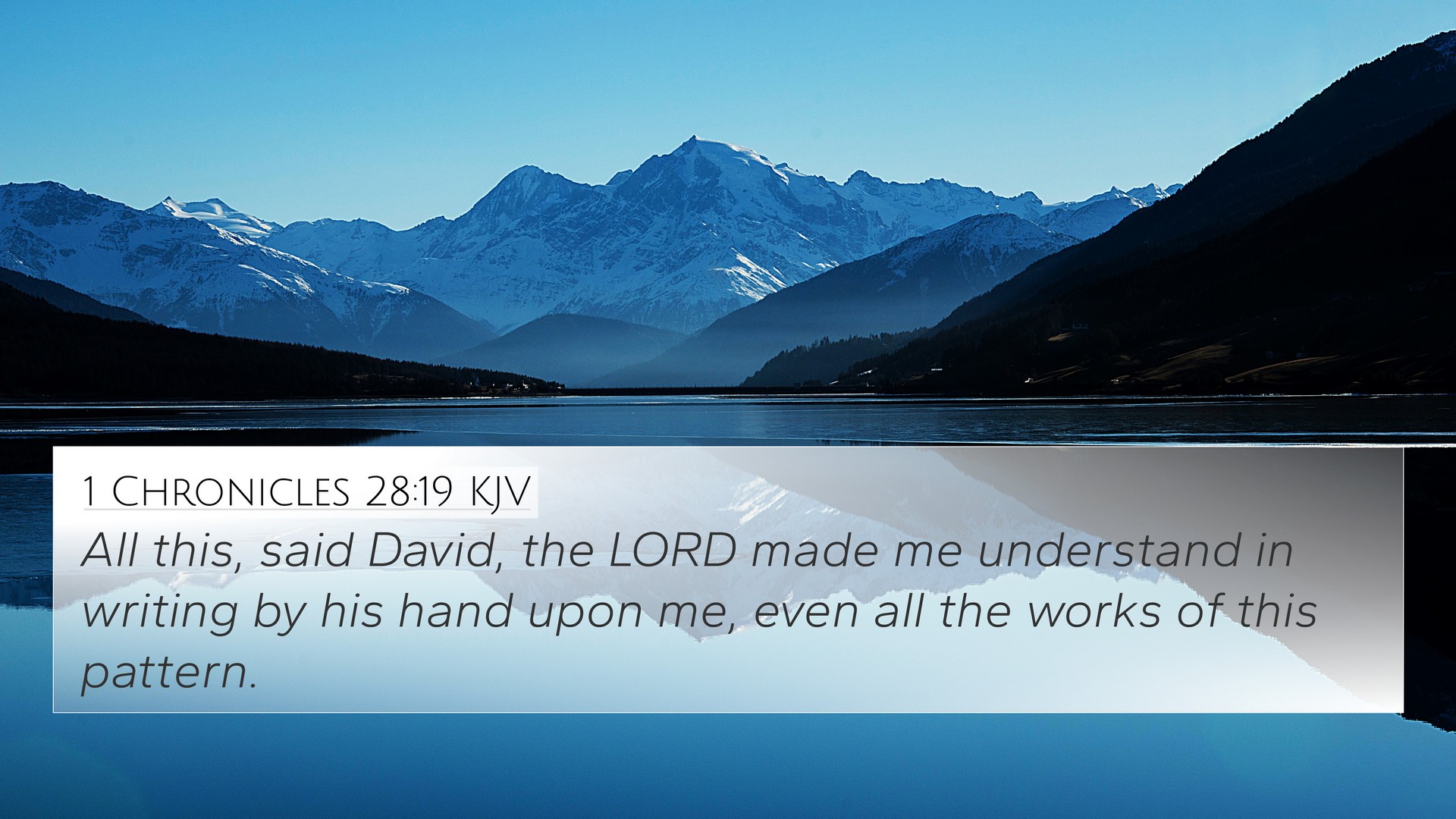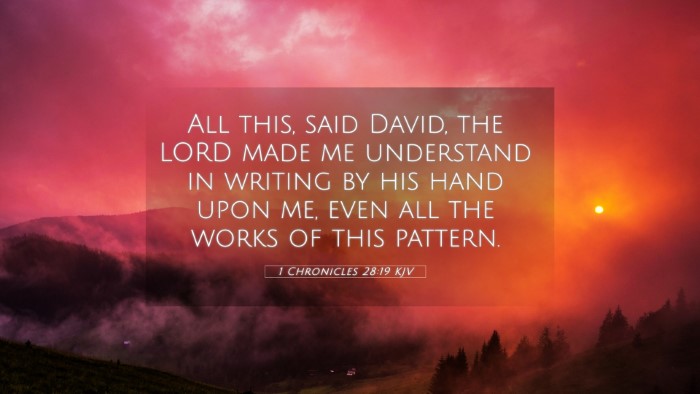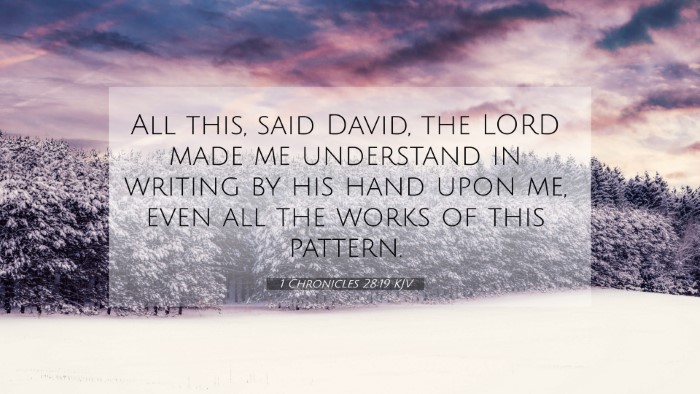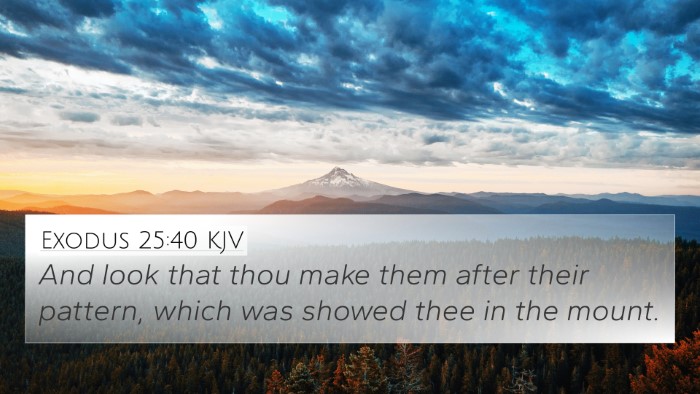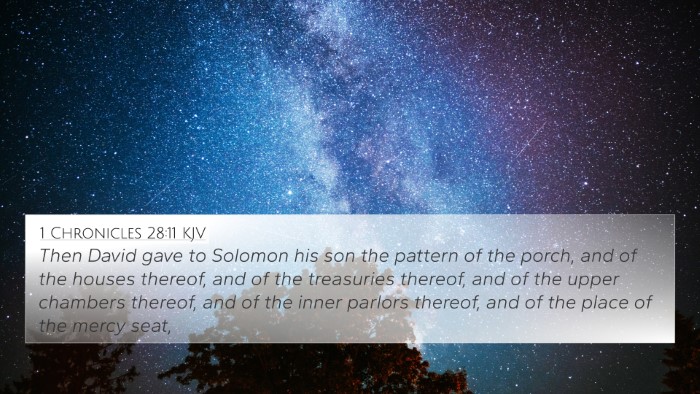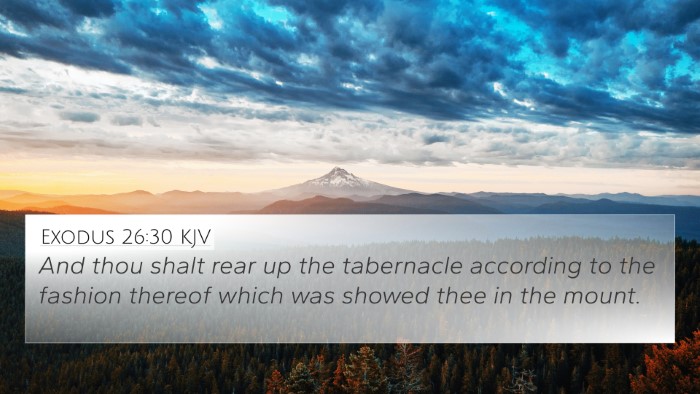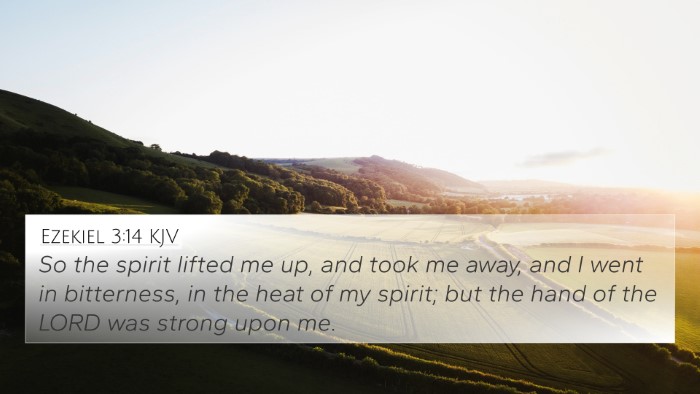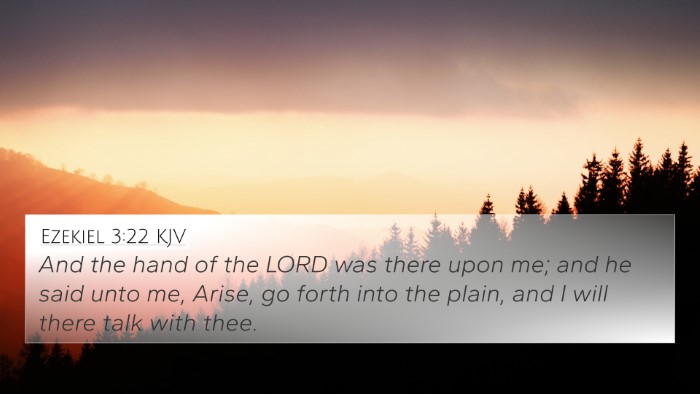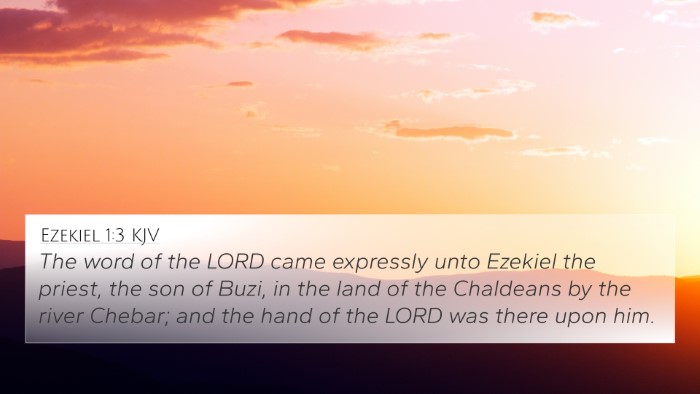Understanding 1 Chronicles 28:19
Verse: "All this, said David, the LORD made me understand in writing by His hand upon me, even all the works of this pattern."
General Meaning
This verse emphasizes the divine inspiration behind the plans for the temple that David is conveying to Solomon. It highlights the intimate relationship between King David and God, showcasing that the insights David received were not merely human ideas but divinely imparted understanding.
Commentary Insights
-
Matthew Henry's Commentary:
Henry notes that David was given a clear vision and understanding of the architectural and spiritual design of the temple. This verse illustrates that God communicates His will and purposes to His chosen leaders. David's writing reflects the weight of divine revelation, implying that the temple's design was paramount to the nation’s worship and identity.
-
Albert Barnes' Notes:
Barnes emphasizes the significance of this 'pattern' that David received. It is noted that the detailed plans show God's meticulous care in worship. This understanding reflects the importance of following God's instructions precisely in religious observance and societal structure.
-
Adam Clarke's Commentary:
Clarke elaborates on the phrase "by His hand upon me," indicating a strong affirmation of divine guidance. He suggests this moment signifies a transition in leadership, highlighting Solomon’s role in fulfilling the visions God granted to David, preserving the legacy of divine instruction.
Bible Verse Cross-References
- Exodus 25:40: "And see to it that you make them after the pattern for them, which is being shown you on the mountain." - This verse parallels the importance of divine instructions in constructing sacred spaces.
- 1 Kings 6:38: "And in the eleventh year, in the month of Bul, which is the eighth month, the house was finished throughout all its parts..." - This further establishes the fulfillment of David's plans by Solomon.
- Hebrews 8:5: "They serve at a sanctuary that is a copy and shadow of what is in heaven." - Highlights the heavenly model that earthly worship follows.
- Psalm 127:1: "Unless the LORD builds the house, they labor in vain who build it..." - Reflects the dependence on God’s designs for success.
- Acts 15:18: "Known unto God are all his works from the beginning of the world." - Affirms God’s omniscience in directing the affairs of His people.
- Matthew 16:18: "And I tell you that you are Peter, and on this rock, I will build my church..." - Shows the continuity of God building His edifice from David through Christ.
- Isaiah 28:16: "So this is what the Sovereign LORD says: 'See, I lay a stone in Zion, a tested stone, a precious cornerstone for a sure foundation..." - This reflects God’s ultimate design for salvation and hope.
Thematic Connections
This verse connects with broader themes of divine guidance, leadership, and worship design within Scripture. The meticulous nature of God’s plans for the temple serves as a metaphor for the attention believers must pay to God’s directives in their lives.
Cross-Referencing Biblical Texts
When studying 1 Chronicles 28:19, it is beneficial to explore cross-references that consider how God interacts with His chosen leaders, the importance of divine guidance, and how these dynamics manifest in both the Old and New Testaments.
Tools for Bible Cross-Referencing
Utilizing a Bible concordance or a Bible cross-reference guide can greatly enhance your understanding of connections between verses, allowing for a deeper exploration of thematic Bible verse connections.
As you study this verse, consider how it complements other scriptures relating to worship, God’s blueprint for success, and the leadership roles outlined throughout the Bible.
Conclusion
1 Chronicles 28:19 serves as a pivotal scripture that reveals much about God's plans for worship and the importance of following divine direction. By examining related verses, believers can develop a comprehensive understanding of God's intentions across both testaments and how they apply to present-day faith and practice.
